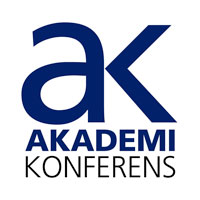
Invited Confirmed Speakers and Chairs
Invited confirmed participants of Se2017, in alphabetical order
Takaaki Akaike, Tohoku University Graduate School of Medicine, Japan, Keynote Lecture
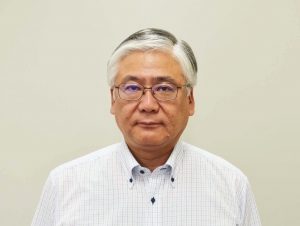 Prof. Takaaki Akaike graduated from the Kumamoto University Medical School in Japan, and earned his MD, PhD degree from the Graduate School of Medicine, Kumamoto University in 1991. He then joined the Department of Microbiology at Kumamoto University School of Medicine, where he was appointed to several faculty positions and was promoted to Full Professor in 2005. In 2013, he moved to Tohoku University Graduate School of Medicine as Professor & Chairman of the Department of Environmental Health Sciences and Molecular Toxicology. He held concurrent appointments as Visiting Professors at Thomas Jefferson University (1993) and at University of Alabama at Birmingham (2001), Program Officer at the Ministry of Education, Science, Sports and Culture (MEXT) of Japan (2003-2005), and Vice Dean & Director of Center for Medical Education and Research at Kumamoto University Medical School (2011-2012). He has received the Society for the Free Radical Research Japan Prize (2014) and ASAKAWA Award from the Japanese Society for Bacteriology (2015). Prof. Akaike was the president of the International/Japanese Nitric Oxide Society (~2011).
Prof. Takaaki Akaike graduated from the Kumamoto University Medical School in Japan, and earned his MD, PhD degree from the Graduate School of Medicine, Kumamoto University in 1991. He then joined the Department of Microbiology at Kumamoto University School of Medicine, where he was appointed to several faculty positions and was promoted to Full Professor in 2005. In 2013, he moved to Tohoku University Graduate School of Medicine as Professor & Chairman of the Department of Environmental Health Sciences and Molecular Toxicology. He held concurrent appointments as Visiting Professors at Thomas Jefferson University (1993) and at University of Alabama at Birmingham (2001), Program Officer at the Ministry of Education, Science, Sports and Culture (MEXT) of Japan (2003-2005), and Vice Dean & Director of Center for Medical Education and Research at Kumamoto University Medical School (2011-2012). He has received the Society for the Free Radical Research Japan Prize (2014) and ASAKAWA Award from the Japanese Society for Bacteriology (2015). Prof. Akaike was the president of the International/Japanese Nitric Oxide Society (~2011).
Elias Arnér, Karolinska Institutet, Sweden, Welcome address, Keynote Lecture, Chair
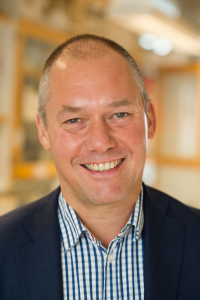 Elias Arnér, MD PhD, was appointed Professor in Biochemistry in 2009 and is Head of the Biochemistry Division in the Department of Medical Biochemistry and Biophysics at Karolinska Institutet (KI). He received his PhD (1993) and MD (1997) as a student of an MD PhD program at KI. His PhD thesis was on nucleotide metabolism and nucleoside analogs as therapeutics. He did his post docs first with Prof. Arne Holmgren (Stockholm) on mammalian thioredoxin reductase as a selenoprotein, and subsequently with August Böck (Munich) on the production of thioredoxin reductase as a recombinant selenoprotein in E. coli. Developing techniques for recombinant selenoprotein synthesis in E. coli and to study structure-function relationships of selenoproteins, especially isoforms of thioredoxin reductase, has since been a main line of research in the Arnér laboratory. Additional interests are to develop biotechnological applications of selenoproteins, to understand redox signaling pathways in mammalian cells, and to develop novel anticancer therapies that target selenoproteins as their mechanism of action. Arnér has published 120 articles found in PubMed, with 12,100+ citations and an h-index of 45 (Google Scholar). In his role as Chair of the Se2017 conference he welcomes all participants to, as he hopes and trusts, a fruitful and vibrant meeting with many discussions on selenium research in all of its numerous and exciting aspects.
Elias Arnér, MD PhD, was appointed Professor in Biochemistry in 2009 and is Head of the Biochemistry Division in the Department of Medical Biochemistry and Biophysics at Karolinska Institutet (KI). He received his PhD (1993) and MD (1997) as a student of an MD PhD program at KI. His PhD thesis was on nucleotide metabolism and nucleoside analogs as therapeutics. He did his post docs first with Prof. Arne Holmgren (Stockholm) on mammalian thioredoxin reductase as a selenoprotein, and subsequently with August Böck (Munich) on the production of thioredoxin reductase as a recombinant selenoprotein in E. coli. Developing techniques for recombinant selenoprotein synthesis in E. coli and to study structure-function relationships of selenoproteins, especially isoforms of thioredoxin reductase, has since been a main line of research in the Arnér laboratory. Additional interests are to develop biotechnological applications of selenoproteins, to understand redox signaling pathways in mammalian cells, and to develop novel anticancer therapies that target selenoproteins as their mechanism of action. Arnér has published 120 articles found in PubMed, with 12,100+ citations and an h-index of 45 (Google Scholar). In his role as Chair of the Se2017 conference he welcomes all participants to, as he hopes and trusts, a fruitful and vibrant meeting with many discussions on selenium research in all of its numerous and exciting aspects.
Gary S Bañuelos, USDA-ARS, USA, Welcome address, Keynote Lecture, Chair
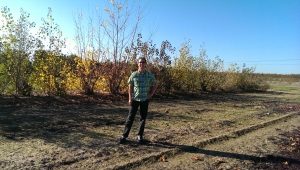 Dr. Bañuelos has conducted scientific research for over two decades with the USDA-ARS as a Plant/Soil Scientist and as adjunct professor with University of California and California State University-Fresno. Bañuelos began his work on “green technology and selenium” with the late Professor Horst Marschner in Germany. He has focused his activities on the phytoremediation of soils and waters laden with selenium, while striving to create selenium biofortification strategies for humans and animals. His integrated approach to field phytoremediation and biofortification involves more than just the selection of crops, but also considers crop rotation, water reuse, natural chemical transformation within the soil, and production of innovative biofortified and biobased products,e.g., biofuel, Se-enriched feeds and food. Ultimately, his goal is to effectively create green strategies worldwide for redistributing selenium from soil, plant to animals and humans.
Dr. Bañuelos has conducted scientific research for over two decades with the USDA-ARS as a Plant/Soil Scientist and as adjunct professor with University of California and California State University-Fresno. Bañuelos began his work on “green technology and selenium” with the late Professor Horst Marschner in Germany. He has focused his activities on the phytoremediation of soils and waters laden with selenium, while striving to create selenium biofortification strategies for humans and animals. His integrated approach to field phytoremediation and biofortification involves more than just the selection of crops, but also considers crop rotation, water reuse, natural chemical transformation within the soil, and production of innovative biofortified and biobased products,e.g., biofuel, Se-enriched feeds and food. Ultimately, his goal is to effectively create green strategies worldwide for redistributing selenium from soil, plant to animals and humans.
Marla J. Berry, John A. Burns School of Medicine – University of Hawaii at Mānoa, USA, Keynote Lecture
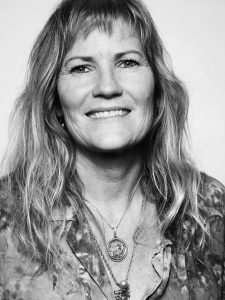 Dr. Marla Berry, Professor and Chair of the Department of Cell and Molecular Biology and Co-chair of the Cell and Molecular Biology Graduate Program at the University of Hawaii at Manoa. Her contributions to the selenium field include identifying the eukaryotic sequences that specify selenocysteine incorporation, termed SECIS elements, and identifying the elongation factor specific for selenocysteyl-tRNA, EFsec. Her current research focuses on the roles of selenoenzymes in metabolic syndrome and neurological development. Dr. Berry has been continuously R01-funded since 1993. She has mentored 18 postdoctoral fellows, 6 M.D. research fellows, 40 graduate students and over 30 undergraduates. Among faculty she has mentored, eight have been awarded R01 grants, and five have obtained R21 grants.
Dr. Marla Berry, Professor and Chair of the Department of Cell and Molecular Biology and Co-chair of the Cell and Molecular Biology Graduate Program at the University of Hawaii at Manoa. Her contributions to the selenium field include identifying the eukaryotic sequences that specify selenocysteine incorporation, termed SECIS elements, and identifying the elongation factor specific for selenocysteyl-tRNA, EFsec. Her current research focuses on the roles of selenoenzymes in metabolic syndrome and neurological development. Dr. Berry has been continuously R01-funded since 1993. She has mentored 18 postdoctoral fellows, 6 M.D. research fellows, 40 graduate students and over 30 undergraduates. Among faculty she has mentored, eight have been awarded R01 grants, and five have obtained R21 grants.
Mikael Björnstedt, Karolinska Institutet, Sweden, Keynote Lecture
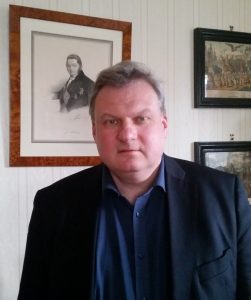 Mikael Björnstedt, MD, PhD, was appointed Professor in Pathology at Karolinska Institutet in 2010 and is Head of the Laboratory for Clinical Pathology and Cytology, Karolinska University Hospital and Medical Advisor to the County Council of Stockholm. He received his PhD (1995) at the Department of Medical Biochemistry and Biophysics, Karolinska Institutet. The PhD thesis on reactions of selenium compounds with the thioredoxin system was the first thesis on selenium in Professor Arne Holmgrens group. He did his post doc along with clinical training at the Department of Laboratory Medicine, Karolinska Institutet and received full licence to practice in 1997 and a specialist degree in Clinical Pathology in 2005. The main research focus concerns the use of selenium compounds in the treatment of cancer. The studies are truly translational spanning from preclinical investigations on mechanisms and novel selenium compounds to advanced organotypic techniques and human clinical trials. The group published in 2015 the first systematic phase I study of selenite in the treatment of end-stage cancer patients.
Mikael Björnstedt, MD, PhD, was appointed Professor in Pathology at Karolinska Institutet in 2010 and is Head of the Laboratory for Clinical Pathology and Cytology, Karolinska University Hospital and Medical Advisor to the County Council of Stockholm. He received his PhD (1995) at the Department of Medical Biochemistry and Biophysics, Karolinska Institutet. The PhD thesis on reactions of selenium compounds with the thioredoxin system was the first thesis on selenium in Professor Arne Holmgrens group. He did his post doc along with clinical training at the Department of Laboratory Medicine, Karolinska Institutet and received full licence to practice in 1997 and a specialist degree in Clinical Pathology in 2005. The main research focus concerns the use of selenium compounds in the treatment of cancer. The studies are truly translational spanning from preclinical investigations on mechanisms and novel selenium compounds to advanced organotypic techniques and human clinical trials. The group published in 2015 the first systematic phase I study of selenite in the treatment of end-stage cancer patients.
Regina Brigelius-Flohe, German Institute of Human Nutrition, Germany, Plenary Lecture: “Enzymology and biological functions of glutathione peroxidases”
Martin Broadley, University of Nottingham, UK, Keynote Lecture
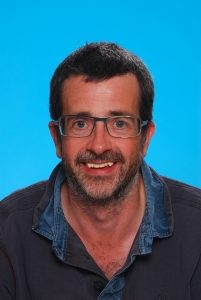 Martin is Professor of Plant Nutrition, at the University of Nottingham. His research seeks to increase our understanding of mineral nutrient dynamics (including selenium!) in agriculture and food systems, with a particular focus on improving the nutritional quality of food crops. This work involves many international collaborations with soil and crop scientists, social scientists, and human/animal nutritionists. Current projects include: (1) a capacity strengthening programme, Soil Geochemistry for Improved Agriculture and Public Health, in collaboration with colleagues in Ethiopia, Malawi, Zambia and Zimbabwe, (2) a project spanning soil sciences, agronomy and crop breeding, and veterinary sciences, to improve forage nutrient management for improved animal health, (3) projects using wild relatives of wheat to produce varieties adapted to sub-tropical soils; (4) an inter-institute project to improve nutrient-use efficiency in UK-grown field Brassica. Scopus Author ID 7003414033; Twitter: @martinbroadley, @AfricaGeochem.
Martin is Professor of Plant Nutrition, at the University of Nottingham. His research seeks to increase our understanding of mineral nutrient dynamics (including selenium!) in agriculture and food systems, with a particular focus on improving the nutritional quality of food crops. This work involves many international collaborations with soil and crop scientists, social scientists, and human/animal nutritionists. Current projects include: (1) a capacity strengthening programme, Soil Geochemistry for Improved Agriculture and Public Health, in collaboration with colleagues in Ethiopia, Malawi, Zambia and Zimbabwe, (2) a project spanning soil sciences, agronomy and crop breeding, and veterinary sciences, to improve forage nutrient management for improved animal health, (3) projects using wild relatives of wheat to produce varieties adapted to sub-tropical soils; (4) an inter-institute project to improve nutrient-use efficiency in UK-grown field Brassica. Scopus Author ID 7003414033; Twitter: @martinbroadley, @AfricaGeochem.
Raymond F. Burk, Vanderbilt University Medical Center, USA, Plenary Lecture: “Nutritional aspects of selenium in human beings”
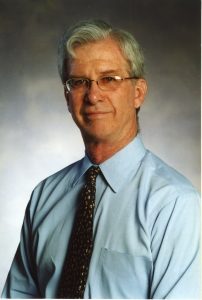 Dr. Burk entered Vanderbilt to study medicine in 1964. He worked in the Department of Biochemistry on selenium metabolism all 4 years in the lab of William N. Pearson, Ph.D. During this time he spent 2 summers at the Institute of Nutrition for Central America and Panama (INCAP) working on selenium nutrition in malnourished children. He then finished his internal medical training at Vanderbilt and served 3 years at the U.S. Army Medical Research and Nutrition Laboratory (USAMRNL) in Denver. While in the Army, Dr. Burk carried out research on selenium metabolism that resulted in a number of publications. He also participated in a nutrition evaluation of prisoners of war in Vietnam while at the USAMRNL.
Dr. Burk entered Vanderbilt to study medicine in 1964. He worked in the Department of Biochemistry on selenium metabolism all 4 years in the lab of William N. Pearson, Ph.D. During this time he spent 2 summers at the Institute of Nutrition for Central America and Panama (INCAP) working on selenium nutrition in malnourished children. He then finished his internal medical training at Vanderbilt and served 3 years at the U.S. Army Medical Research and Nutrition Laboratory (USAMRNL) in Denver. While in the Army, Dr. Burk carried out research on selenium metabolism that resulted in a number of publications. He also participated in a nutrition evaluation of prisoners of war in Vietnam while at the USAMRNL.
Dr. Burk began his faculty career as Assistant Professor of Internal Medicine and Biochemistry at the University of Texas Southwestern Medical School in Dallas from 1975 to 1978. While in Dallas, he helped establish the parenteral nutrition service at Parkland hospital. After two years as Associate Professor of Medicine and Biochemistry at LSU, he was recruited to the University of Texas Health Science Center in San Antonio. In 1987 he was recruited to Vanderbilt and served as Director of Gastroenterology from 1987 until 1998. He has been Professor of Medicine at Vanderbilt since 1987 and has continued his research on selenium metabolism.
The Gastroenterology Division and its training program grew significantly under Dr. Burk’s direction. He played a major role in the establishment of Vanderbilt’s liver transplant program. More recently Dr. Burk served on and chaired scientific advisory committees of the Clinical Research Center and VICTR (Vanderbilt Institute for Clinical and Translational Research). He was the Director of the NIH-funded Vanderbilt Clinical Nutrition Research Unit (CNRU) from 1995 until 2004. He remained active in the clinic and in research until he retired in 2014.
Dr. Burk began working on selenium nutrition and biochemistry in 1964 when he was a first-year medical student. He maintained selenium as his research focus for 50 years. He has received awards for his research on selenium from the American Institute of Nutrition (Lederle Award [1988] and Osborne and Mendel Award [1993]) and the organization Trace Elements in Man and Animals (Underwood Memorial Ledtureship Award [2011]). He held NIH grant support continuously for 40 years and had an NIH Merit Award from 2004 to 2014.
August Böck, Ludwig Maximilian University, Germany, Honorary Speaker at Conference Reception
Sergi Castellano, Max Planck Institute for Evolutionary Anthropology, Keynote Lecture
 Dr. Castellano is a computational genomicist at at the Max Planck Institute for Evolutionary Anthropology in Leipzig, Germany. His group focuses on understanding the role of essential micronutrients, with particular emphasis on selenium, in the adaptation of human metabolism to the different environments encountered by archaic and modern humans as they migrated around the world. He has worked on the computational identification of selenoprotein genes in eukaryotic genomes, the identification of adaptive signatures to the uneven levels of selenium worldwide in the genomes of humans and other vertebrates and, more recently, on the adaptation of vertebrate proteins to the loss of selenocysteine. His group is also interested in the population history of archaic humans as it relates to their interbreeding and exchange of genes with modern humans. This exchange facilitated the adaptation of modern humans to new environments and may have been important to the metabolism of selenium.
Dr. Castellano is a computational genomicist at at the Max Planck Institute for Evolutionary Anthropology in Leipzig, Germany. His group focuses on understanding the role of essential micronutrients, with particular emphasis on selenium, in the adaptation of human metabolism to the different environments encountered by archaic and modern humans as they migrated around the world. He has worked on the computational identification of selenoprotein genes in eukaryotic genomes, the identification of adaptive signatures to the uneven levels of selenium worldwide in the genomes of humans and other vertebrates and, more recently, on the adaptation of vertebrate proteins to the loss of selenocysteine. His group is also interested in the population history of archaic humans as it relates to their interbreeding and exchange of genes with modern humans. This exchange facilitated the adaptation of modern humans to new environments and may have been important to the metabolism of selenium.
Joel Caton, North Dakota State University, USA, Keynote Lecture
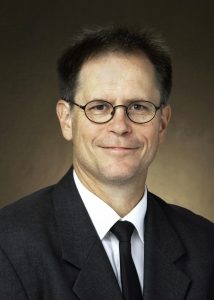 Dr. Joel Caton attended New Mexico State University for his BS, University of Missouri for his MS, and New Mexico State University for his Ph.D. After a postdoctoral fellowship at the University of Missouri, he accepted a research and teaching position at North Dakota State University where he has continued to work in ruminant nutrition, metabolism, and digestive physiology. Dr. Caton teaches both undergraduate and graduate students and has advised or co-advised 43 graduate student degree programs thus far in his career. He has published extensively in scientific journals and conference proceedings, and has given numerous invited presentations at national and international venues. Dr. Caton recently served on the NRC committee to update the Nutrient Requirements of Beef Cattle, 8th Revised Edition). He currently serves as the Associate Editor-in-Chief for the Journal of Animal Science, on the American Society of Animal Science Board of Directors, and on the National Animal Nutrition Program (NRSP-9). Dr. Caton has received awards from North Dakota State University and the American Society of Animal Science for his research accomplishments.
Dr. Joel Caton attended New Mexico State University for his BS, University of Missouri for his MS, and New Mexico State University for his Ph.D. After a postdoctoral fellowship at the University of Missouri, he accepted a research and teaching position at North Dakota State University where he has continued to work in ruminant nutrition, metabolism, and digestive physiology. Dr. Caton teaches both undergraduate and graduate students and has advised or co-advised 43 graduate student degree programs thus far in his career. He has published extensively in scientific journals and conference proceedings, and has given numerous invited presentations at national and international venues. Dr. Caton recently served on the NRC committee to update the Nutrient Requirements of Beef Cattle, 8th Revised Edition). He currently serves as the Associate Editor-in-Chief for the Journal of Animal Science, on the American Society of Animal Science Board of Directors, and on the National Animal Nutrition Program (NRSP-9). Dr. Caton has received awards from North Dakota State University and the American Society of Animal Science for his research accomplishments.
Laurent Charlet, Grenoble, France, Keynote Lecture
Laurent Chavatte, France, Keynote Lecture
Dr Laurent Chavatte is a biochemist, cellular and molecular biologist working on selenoprotein synthesis and regulation in mammals.
He recently joined the International Center for Infectiology Research (CIRI, http://ciri.inserm.fr/en) located at the Ecole Normale Supérieure of Lyon, France, in Dr Théophile Ohlmann’s laboratory : translation in eukaryotes and viruses (TEV team). He is now working on the role of the selenoproteome in immune cells and its regulation in response to viral infections.
His scientific interests focus on (i) understanding the mechanism of translational recoding of UGA as selenocysteine by delineating structure, function and assembly of the selenocysteine insertion machinery and (ii) investigating the regulation of selenoproteins synthesis in mammalian cells in response to various physiological and pathological conditions.
He obtained his Ph.D. in Protein Biochemistry from the University of Paris 7 (Denis Diderdot) in 2001, working on translation termination in eukaryotes. He did his post-doc in Donna Driscoll’s laboratory (2002-2005), at the Cleveland Clinic Foundation, where he get into the selenoprotein synthesis field. In 2005, Laurent Chavatte was recruited by the National Center for Scientific Research (CNRS), in France. In 2008, he was awarded a young investigator ATIP research program and obtained his habilitation in 2012.
Krishna Chatterjee, University of Cambridge, UK, Plenary Lecture: “Phenotypes and molecular pathogenesis of disorders of human selenoprotein synthesis”
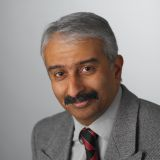 Krishna Chatterjee is Professor of Endocrinology at the University of Cambridge. His primary research interests, supported by a Wellcome Trust Senior Investigator Award, are in genetic and molecular endocrinology, with particular emphasis on disorders of thyroid hormone synthesis and action. Due to disordered thyroid hormone metabolism in such cases, his group has identified and characterised human subjects with selenoprotein deficiency; the majority harbour SECISBP2 defects and, most recently, mutation in human tRNAsec has been identified. His research has also elucidated the diverse, multisystem clinical phenotype of these disorders and seeks to understand the molecular pathogenesis.
Krishna Chatterjee is Professor of Endocrinology at the University of Cambridge. His primary research interests, supported by a Wellcome Trust Senior Investigator Award, are in genetic and molecular endocrinology, with particular emphasis on disorders of thyroid hormone synthesis and action. Due to disordered thyroid hormone metabolism in such cases, his group has identified and characterised human subjects with selenoprotein deficiency; the majority harbour SECISBP2 defects and, most recently, mutation in human tRNAsec has been identified. His research has also elucidated the diverse, multisystem clinical phenotype of these disorders and seeks to understand the molecular pathogenesis.
Wen-Hsing Cheng, Mississippi State University, Keynote Lecture
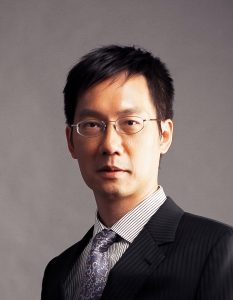 Dr. Wen-Hsing Cheng is Associate Professor of Nutrition at the Mississippi State University, USA, and has been conducting research on selenium since 1995. He received his Ph.D. from Cornell University (nutritional biochemistry) in 2001 in the group of Xingen Lei. His MS thesis and PhD dissertation were on antioxidative and metabolic roles of glutathione peroxidase-1 using knockout and overexpression mouse models. He was a postdoctoral fellow and then a research fellow with Vilhelm Bohr in the Laboratory of Molecular Gerontology at the National Institute on Aging, USA, studying human premature aging syndromes and DNA repair using cell models and purified proteins. Prior to joining Mississippi State University in 2013, Dr. Cheng was Assistant Professor of Nutritional Genomics in the University of Maryland at College Park, USA (2007-2013). Dr. Cheng’s research is focused on molecular, cellular, and physiological functions of selenium and selenoprotein H in aging and age-related degeneration, using cells and mice as models. Dr. Cheng has published 80+ articles, with 3,986+ citations and an h-index of 33 (Google Scholar).
Dr. Wen-Hsing Cheng is Associate Professor of Nutrition at the Mississippi State University, USA, and has been conducting research on selenium since 1995. He received his Ph.D. from Cornell University (nutritional biochemistry) in 2001 in the group of Xingen Lei. His MS thesis and PhD dissertation were on antioxidative and metabolic roles of glutathione peroxidase-1 using knockout and overexpression mouse models. He was a postdoctoral fellow and then a research fellow with Vilhelm Bohr in the Laboratory of Molecular Gerontology at the National Institute on Aging, USA, studying human premature aging syndromes and DNA repair using cell models and purified proteins. Prior to joining Mississippi State University in 2013, Dr. Cheng was Assistant Professor of Nutritional Genomics in the University of Maryland at College Park, USA (2007-2013). Dr. Cheng’s research is focused on molecular, cellular, and physiological functions of selenium and selenoprotein H in aging and age-related degeneration, using cells and mice as models. Dr. Cheng has published 80+ articles, with 3,986+ citations and an h-index of 33 (Google Scholar).
Allan Chilimba, Agricultural Research Services for Technology Development, Malawi, Keynote Lecture
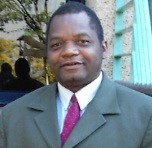 Dr. Allan D.C. Chilimba is retiring at end of January, 2017 as Senior Deputy Director of Agricultural Research Services for Technology Development, Ministry of Agriculture, Irrigation and Water Development and will be Managing Director of AGRISO Consultants and Ngolojere Investments.
Dr. Allan D.C. Chilimba is retiring at end of January, 2017 as Senior Deputy Director of Agricultural Research Services for Technology Development, Ministry of Agriculture, Irrigation and Water Development and will be Managing Director of AGRISO Consultants and Ngolojere Investments.
He has worked in the Department of Agricultural Research Services for over 30 years at various levels, as a Soil Scientist, Principal Soil Scientist and Chief Soil Scientist with various responsibilities such as Commodity Team Leader, National Research Coordinator for Soils and Agricultural Engineering Commodity Group, Deputy Director and Senior Deputy Director.
He has a PhD from the University of Nottingham, United Kingdom. He has also Master of Science in Soil Science from North Carolina State University and the University of Malawi, Bachelor of Science in Agriculture and Post Graduate Diploma in Public Administration and Civil Service Management.
His research focus has been in improving soil fertility and fertilizer use in Malawi solving eminent nutrient deficiencies in Malawi soils. His PhD research was on Biofortification of maize, staple food in Malawi, with selenium. After his PhD he continued working on Se and intends to address selenium deficiency in Malawian diet and will continue addressing other soil nutrients deficiencies that leads to inadequate intake on micronutrients by Malawian population. In addition, he has been providing consultancy on soil survey under AGRISO Consultants to stakeholders.
Marcus Conrad, Helmholtz Zentrum, Germany, Keynote Lecture
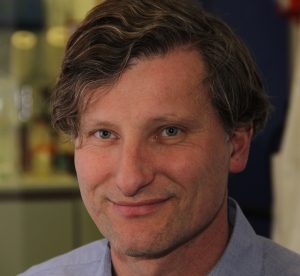 Dr. Marcus Conrad is Group Leader at the Helmholtz Zentrum München, Germany. Dr. Conrad graduated from at the University of Konstanz in 1998 and received his Ph.D. (2001) with highest honors from the Ludwig-Maximilians University, Munich. After a postdoctoral training at the Helmholtz Zentrum München with Dr. Georg W. Bornkamm he became Group Leader at the same research center (2005 – 2009). During that period he visited the Karolinska Institutet (with Dr. Arne Östman), Stockholm, and Yamagata University (with Dr. Hideyo Sato), Japan as research scholar. From 2009-2010 he worked as Laboratory Head at Bayer-Schering Pharma, Berlin, in in vivo Pharmacology and Biomarker Research in Oncology. After heading a transgenic unit at the German Research Center for Neurodegenerative Diseases, he became Group Leader in Drug Discovery and Chemical Biology at the Helmholtz Zentrum München (since 2012).
Dr. Marcus Conrad is Group Leader at the Helmholtz Zentrum München, Germany. Dr. Conrad graduated from at the University of Konstanz in 1998 and received his Ph.D. (2001) with highest honors from the Ludwig-Maximilians University, Munich. After a postdoctoral training at the Helmholtz Zentrum München with Dr. Georg W. Bornkamm he became Group Leader at the same research center (2005 – 2009). During that period he visited the Karolinska Institutet (with Dr. Arne Östman), Stockholm, and Yamagata University (with Dr. Hideyo Sato), Japan as research scholar. From 2009-2010 he worked as Laboratory Head at Bayer-Schering Pharma, Berlin, in in vivo Pharmacology and Biomarker Research in Oncology. After heading a transgenic unit at the German Research Center for Neurodegenerative Diseases, he became Group Leader in Drug Discovery and Chemical Biology at the Helmholtz Zentrum München (since 2012).
Dr. Conrad has a long-standing interest in interrogating the molecular mechanisms of redox regulated cell processes, such as cell proliferation and cell death. To this end, he published the first conditional knockout mouse models for antioxidant enzymes, such as the selenoenzymes mitochondrial thioredoxin reductase (TXNRD2), cytosolic thioredoxin reductase (TXNRD1) and various models for glutathione peroxidase 4 (GPX4). The conditional GPX4 knockout mice and cells were instrumental in demonstrating that this selenoenzyme is the key regulator of a recently recognized form or regulated necrotic cell death, now known as ferroptosis. Moreover, these models also helped in the discovery and preclinical development of the first in vivo active ferroptosis inhibitor, called Liproxstatin-1. Current studies in his laboratory aim at dissecting the mechanisms of GPX4 regulation and the cellular events downstream of GPX4 inactivation/inhibition in ferroptotic cell death.
Gijs Du Laing, University of Ghent, Keynote Lecture
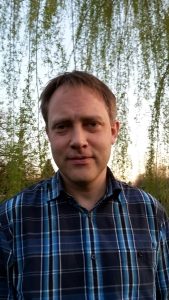 Dr. Gijs Du Laing was appointed professor at the Laboratory of Analytical Chemistry and Applied Ecochemistry of Ghent University (Belgium) in 2009. He received his PhD in Applied Biological Sciences at Ghent University in 2007. His research focuses mainly on factors affecting trace element speciation, mobility and bioavailability in food, feed and the environment. His selenium research is particularly focused on the development of biosorption-based technologies for removal and recovery of selenium from wastewaters, selenium biofortification in Belgium and Kenya, and assessment of bioavailability and species transformations of selenium in the gastrointestinal tract of humans and animals.
Dr. Gijs Du Laing was appointed professor at the Laboratory of Analytical Chemistry and Applied Ecochemistry of Ghent University (Belgium) in 2009. He received his PhD in Applied Biological Sciences at Ghent University in 2007. His research focuses mainly on factors affecting trace element speciation, mobility and bioavailability in food, feed and the environment. His selenium research is particularly focused on the development of biosorption-based technologies for removal and recovery of selenium from wastewaters, selenium biofortification in Belgium and Kenya, and assessment of bioavailability and species transformations of selenium in the gastrointestinal tract of humans and animals.
Aristi Fernandes, Karolinska Institutet, Sweden, Chair
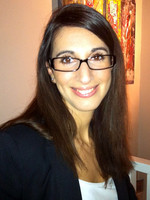 Aristi P. Fernandes is a Swedish Associate Professor in experimental pathology, active in the fields of redox biology and selenium cancer research. The PhD was received in 2003, under the supervision of Professor Arne Holmgren at Karolinska Institutet and was focused on biochemically characterizing the thiol redox regulating glutaredoxin system in depth in E. coli. She moved to the Karolinska University Hospital at the Division of Pathology, to work on redox regulation of human cancers with special emphasis on Se metabolism. She became associate professor in 2009 in experimental pathology and appointed senior lecturer in 2010. In 2014 she moved to the Department of Medical Biochemistry and Biophysics at Karolinska Institutet, were she established her own research group, focusing on more mechanistically directed studies with the aim to characterize novel Selenium compounds and Selenium nanoparticles as anticancer agents.
Aristi P. Fernandes is a Swedish Associate Professor in experimental pathology, active in the fields of redox biology and selenium cancer research. The PhD was received in 2003, under the supervision of Professor Arne Holmgren at Karolinska Institutet and was focused on biochemically characterizing the thiol redox regulating glutaredoxin system in depth in E. coli. She moved to the Karolinska University Hospital at the Division of Pathology, to work on redox regulation of human cancers with special emphasis on Se metabolism. She became associate professor in 2009 in experimental pathology and appointed senior lecturer in 2010. In 2014 she moved to the Department of Medical Biochemistry and Biophysics at Karolinska Institutet, were she established her own research group, focusing on more mechanistically directed studies with the aim to characterize novel Selenium compounds and Selenium nanoparticles as anticancer agents.
Milton Ferreira de Moraes, Federal University of Mato Grosso, Brazil, Chair
 Milton received his B.Sc. in Agronomy Federal University of Goias (UFG). He obtained his M.Sc. in Tropical and Subtropical Agriculture (Soil Fertility) from the Agronomic Institute of Campinas (IAC). He obtained his D.Sc. in Science (Mineral Nutrition of Plants and Fertilization) from the Center for Nuclear Energy in Agriculture of the University of Sao Paulo (CENA/USP). During 2008 he was a visiting scholar at the Cornell University/Robert W. Holley Center for Agriculture and Health-USDA/ARS (Ithaca, NY, USA). He did his Post-Doctorate in Genetics in Plant Nutrition at the Department of Plant Breeding of the “Luiz de Queiroz” College of Agriculture, ESALQ/USP. He was affiliated member of the Brazilian Academy of Science during the period 2008-2012. He has expertise in mineral nutrition of plants, soil fertility, and fertilizers, particularly in the field of micronutrients, biofortification and fertilization of field crops (soybean and maize). Currently, he is Adjunct Professor of Agronomy at the Federal University of Mato Grosso (UFMT), CNPq Research Productivity Fellow (Level 2 – Agronomy) and member board of the Communications in Soil Science and Plant Analysis.
Milton received his B.Sc. in Agronomy Federal University of Goias (UFG). He obtained his M.Sc. in Tropical and Subtropical Agriculture (Soil Fertility) from the Agronomic Institute of Campinas (IAC). He obtained his D.Sc. in Science (Mineral Nutrition of Plants and Fertilization) from the Center for Nuclear Energy in Agriculture of the University of Sao Paulo (CENA/USP). During 2008 he was a visiting scholar at the Cornell University/Robert W. Holley Center for Agriculture and Health-USDA/ARS (Ithaca, NY, USA). He did his Post-Doctorate in Genetics in Plant Nutrition at the Department of Plant Breeding of the “Luiz de Queiroz” College of Agriculture, ESALQ/USP. He was affiliated member of the Brazilian Academy of Science during the period 2008-2012. He has expertise in mineral nutrition of plants, soil fertility, and fertilizers, particularly in the field of micronutrients, biofortification and fertilization of field crops (soybean and maize). Currently, he is Adjunct Professor of Agronomy at the Federal University of Mato Grosso (UFMT), CNPq Research Productivity Fellow (Level 2 – Agronomy) and member board of the Communications in Soil Science and Plant Analysis.
Leopold Flohe, University of the Republic, Uruguay, Chair
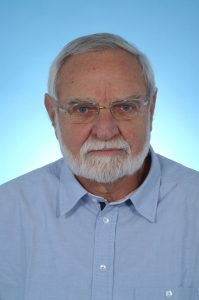 Leopold Flohé was born on April 15 1938 in Grevenbroich, Germany, and is German citizen. In 1957, he started his academic education as a student of philosophy at the universities of Cologne and Heidelberg. In 1959, he switched to medicine and later to biochemistry at the University of Tübingen, from which he received the diploma in biochemistry in 1967, the medical degree (MD) in 1968 and the venia legendi for biochemistry in 1971. From 1968 to 1973 he worked as scientist at the Institute of Biochemistry at the University of Tübingen. Thereafter he took a position at the pharmaceutical company Grünenthal GmbH, since 1976 as Head of Research and Development, while simultaneously teaching at the universties of Tübingen and Aachen. In 1990, he returned to academia as scientific director of the Gesellschaft für Biotechnologische Forschung (GBF; now HZI) and professor of biotechnology at the Technical University of Braunschweig. After his obligatory retirement at the age of 65, he kept working as guest at the University of Magdeburg, CEO of a start-up company and visiting professor at the universities in Montevideo (UY) and Padova (IT). His scientific opus comprised a wide spectrum of subjects ranging from the enzymology of selenoproteins to catecholamine metabolism, free radical production, drug development, fibrinolysis and peroxide metabolism in protozoa and bacteria. His achievements were acknowledged with by honorary degrees from the universities of Buenos Aires (AR) and Montevideo (UY) and international awards.
Leopold Flohé was born on April 15 1938 in Grevenbroich, Germany, and is German citizen. In 1957, he started his academic education as a student of philosophy at the universities of Cologne and Heidelberg. In 1959, he switched to medicine and later to biochemistry at the University of Tübingen, from which he received the diploma in biochemistry in 1967, the medical degree (MD) in 1968 and the venia legendi for biochemistry in 1971. From 1968 to 1973 he worked as scientist at the Institute of Biochemistry at the University of Tübingen. Thereafter he took a position at the pharmaceutical company Grünenthal GmbH, since 1976 as Head of Research and Development, while simultaneously teaching at the universties of Tübingen and Aachen. In 1990, he returned to academia as scientific director of the Gesellschaft für Biotechnologische Forschung (GBF; now HZI) and professor of biotechnology at the Technical University of Braunschweig. After his obligatory retirement at the age of 65, he kept working as guest at the University of Magdeburg, CEO of a start-up company and visiting professor at the universities in Montevideo (UY) and Padova (IT). His scientific opus comprised a wide spectrum of subjects ranging from the enzymology of selenoproteins to catecholamine metabolism, free radical production, drug development, fibrinolysis and peroxide metabolism in protozoa and bacteria. His achievements were acknowledged with by honorary degrees from the universities of Buenos Aires (AR) and Montevideo (UY) and international awards.
Graham George, University of Saskatchewan, Canada, Chair
Vadim Gladyshev, Harvard University, USA, Plenary Lecture: “Selenium utilization in diverse animals”, Chair
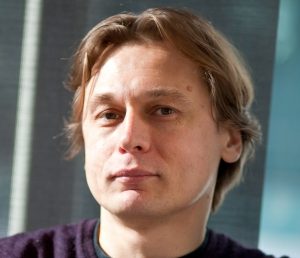 Dr. Vadim N. Gladyshev is a Professor of Medicine at Brigham and Women’s Hospital, Harvard Medical School, Director of the Center for Redox Medicine, and Associate Member of the Broad Institute. Dr. Gladyshev graduated with highest honors (1988) and received his Ph.D. (1992) from Moscow State University, Russia. This was followed by a postdoctoral training (1992-1997) at the National Institutes of Health with Drs. Thressa Stadtman and Dolph Hatfield. In 1998, he joined the University of Nebraska, Lincoln, as a faculty member, where he became a Charles Bessey Professor of Biochemistry in 2005, and then the Director of the Redox Biology Center in 2007. Since 2009, he has been a Professor of Medicine at Brigham and Women’s Hospital, Harvard Medical School located in Boston, MA, USA.
Dr. Vadim N. Gladyshev is a Professor of Medicine at Brigham and Women’s Hospital, Harvard Medical School, Director of the Center for Redox Medicine, and Associate Member of the Broad Institute. Dr. Gladyshev graduated with highest honors (1988) and received his Ph.D. (1992) from Moscow State University, Russia. This was followed by a postdoctoral training (1992-1997) at the National Institutes of Health with Drs. Thressa Stadtman and Dolph Hatfield. In 1998, he joined the University of Nebraska, Lincoln, as a faculty member, where he became a Charles Bessey Professor of Biochemistry in 2005, and then the Director of the Redox Biology Center in 2007. Since 2009, he has been a Professor of Medicine at Brigham and Women’s Hospital, Harvard Medical School located in Boston, MA, USA.
Dr. Gladyshev has had a long-term interest in selenium biology, which he studies in context of selenoprotein synthesis, functions and regulation and links it to redox biology, aging, and cancer. His contributions to the field include characterization of the human selenoproteome (an entire set of human selenium-containing proteins) and prediction of catalytic redox-active cysteine residues based on selenoprotein analyses. The Gladyshev lab’s research combines computational and experimental approaches and uses mice, fruit flies and yeast as model organisms. To date, Dr. Gladyshev has published approximately 300 articles, and has been an AAAS fellow since 2013. He is a recipient of the NIH Pioneer, Eureka and Merit awards.
Rayudu Gopalakrishna, PIBBS, University of California, USA, Keynote Lecture
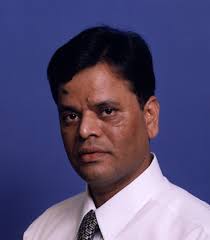 Dr. Rayudu Gopalakrishna is an Associate Professor in the Department of Cell and Neurobiology, University of Southern California. He obtained his Ph.D. in biochemistry in 1979. He carried put his postdoctoral studies at the National Cancer Institute, Bethesda, MD, on Ca2+-dependent cellular regulation focusing on calmodulin and protein kinase C. His current research interests includes understanding the oxidative regulation of protein kinase C cancer-preventive agents, particularly selenium, and the preconditioning of stroke by green tea polyphenols.
Dr. Rayudu Gopalakrishna is an Associate Professor in the Department of Cell and Neurobiology, University of Southern California. He obtained his Ph.D. in biochemistry in 1979. He carried put his postdoctoral studies at the National Cancer Institute, Bethesda, MD, on Ca2+-dependent cellular regulation focusing on calmodulin and protein kinase C. His current research interests includes understanding the oxidative regulation of protein kinase C cancer-preventive agents, particularly selenium, and the preconditioning of stroke by green tea polyphenols.
Luiz Roberto Guimarães Guilherme, Federal University of Lavras, Brazil, Chair
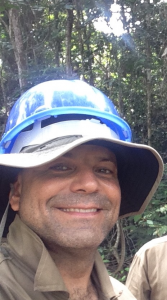 Luiz Roberto (Bebeto) is Professor of Soil Chemistry at the Soil Science Department, Federal University of Lavras, Brazil. His early career work has been dedicated to increasing fertilizer use efficiency for increasing agricultural productivity, with direct effects on improving soil fertility, crop yield, and economic sustainability of Brazilian agriculture. Currently, Luiz’s research/work has been focusing on the fate of trace elements in agro-ecosystems, as well as in mining areas, two subjects of major social/economic/environmental importance in the State of Minas Gerais, Brazil. Part of his recent work has addressed food security issues, with especial emphasis to food quality/safety aspects concerning trace elements in agro-ecosystems. In 2015, Luiz has started a close collaboration with the HarvestPlus Program, coordinating the third phase of the HarvestZinc Project in Brazil, an important initiative that reveal the feasibility of the fertilizer strategy and its vast potential in alleviating micronutrients deficiency (with a special focus on Zn, Se, and I), positively impacting human health, especially in developing countries. Luiz’s work concerning the fate of Se and the role of Se-carrying fertilizers on plant nutrition/food quality in Brazil has helped with a recent normative regulating Se in Brazilian fertilizers.
Luiz Roberto (Bebeto) is Professor of Soil Chemistry at the Soil Science Department, Federal University of Lavras, Brazil. His early career work has been dedicated to increasing fertilizer use efficiency for increasing agricultural productivity, with direct effects on improving soil fertility, crop yield, and economic sustainability of Brazilian agriculture. Currently, Luiz’s research/work has been focusing on the fate of trace elements in agro-ecosystems, as well as in mining areas, two subjects of major social/economic/environmental importance in the State of Minas Gerais, Brazil. Part of his recent work has addressed food security issues, with especial emphasis to food quality/safety aspects concerning trace elements in agro-ecosystems. In 2015, Luiz has started a close collaboration with the HarvestPlus Program, coordinating the third phase of the HarvestZinc Project in Brazil, an important initiative that reveal the feasibility of the fertilizer strategy and its vast potential in alleviating micronutrients deficiency (with a special focus on Zn, Se, and I), positively impacting human health, especially in developing countries. Luiz’s work concerning the fate of Se and the role of Se-carrying fertilizers on plant nutrition/food quality in Brazil has helped with a recent normative regulating Se in Brazilian fertilizers.
Jean Hall, Oregon State University, Keynote Lecture
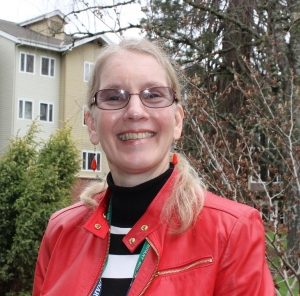 Dr. Jean Hall is a Professor in the College of Veterinary Medicine, Department of Biomedical Sciences, Oregon State University. She received her DVM from Washington State University, completed a Small Animal internship at Angell Memorial Animal Hospital in Boston, and then did her residency training at Colorado State University, where she became Board Certified in Small Animal Internal Medicine. While at Colorado State University, she earned her PhD degree in the Department of Physiology and then completed a Post-Doctoral Fellowship in Clinical Nutrition and Lipid Metabolism at The Oregon Health Sciences University, Portland, Oregon. Dr. Hall’s research is currently focused on health benefits of dietary supplements, e.g., selenium, antioxidants, and n-3 fatty acids and specifically their effects on immune responses and biomarkers in healthy and diseased animals.
Dr. Jean Hall is a Professor in the College of Veterinary Medicine, Department of Biomedical Sciences, Oregon State University. She received her DVM from Washington State University, completed a Small Animal internship at Angell Memorial Animal Hospital in Boston, and then did her residency training at Colorado State University, where she became Board Certified in Small Animal Internal Medicine. While at Colorado State University, she earned her PhD degree in the Department of Physiology and then completed a Post-Doctoral Fellowship in Clinical Nutrition and Lipid Metabolism at The Oregon Health Sciences University, Portland, Oregon. Dr. Hall’s research is currently focused on health benefits of dietary supplements, e.g., selenium, antioxidants, and n-3 fatty acids and specifically their effects on immune responses and biomarkers in healthy and diseased animals.
A research group at Oregon State University with broad expertise works under the leadership of Dr. Hall on the micronutrient selenium and its important role in large animal health and immune function. The team includes basic researchers with expertise in animal nutrition, physiology, and applied statistics, who can evaluate the molecular mechanisms by which selenium works; clinicians and extension veterinarians, who have expertise in the pathophysiology of diseases; and extension agents, who can disseminate the knowledge to livestock producers. The fertilization work led to the Oregon Department of Agriculture’s approval of selenium fertilization in Oregon. Since 2009, our group has published over 20 peer-reviewed publications on the use of organic selenium supplementation in sheep, beef cows, and dairy cows.
Hugh Harris, University of Adelaide, Chair
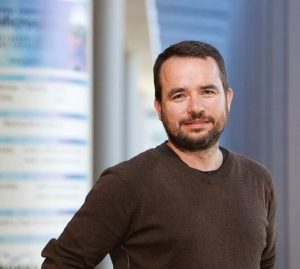 Hugh H. Harris is a Professor in the Department of Chemistry at the University of Adelaide, Australia. He earned his undergraduate and PhD degrees from the University of New South Wales in Sydney, before taking up a postdoctoral position at the Stanford Synchrotron Radiation Lightsource and then at the University of Sydney as Australian Synchrotron Research Program Fellow. His research interest is in the broad field of metals and metalloids in biology with a focus on human diseases and their treatment. X-ray absorption spectroscopy and X-ray fluorescence imaging are key research tools in this area as they are able to provide information on intact tissue samples. His research has been recognised by the receipt of a number of awards including the SSRL WE Spicer young investigator award and an Australian Research Council QEII fellowship.”
Hugh H. Harris is a Professor in the Department of Chemistry at the University of Adelaide, Australia. He earned his undergraduate and PhD degrees from the University of New South Wales in Sydney, before taking up a postdoctoral position at the Stanford Synchrotron Radiation Lightsource and then at the University of Sydney as Australian Synchrotron Research Program Fellow. His research interest is in the broad field of metals and metalloids in biology with a focus on human diseases and their treatment. X-ray absorption spectroscopy and X-ray fluorescence imaging are key research tools in this area as they are able to provide information on intact tissue samples. His research has been recognised by the receipt of a number of awards including the SSRL WE Spicer young investigator award and an Australian Research Council QEII fellowship.”
John Hesketh, Newcastle University, UK, Keynote Lecture
Arne Holmgren, Karolinska Institutet, Sweden, Keynote Lecture, Chair
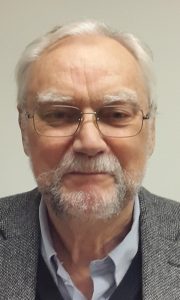 Arne Holmgren studied medicine at Uppsala University 1960-1964 and from August 1964 at Karolinska Institutet (KI) in Stockholm. PhD in 1968 and MD in 1974. Professor in Medical Protein Chemistry and Enzymology 1983 at KI and in Biochemistry 1991 and Director of the Medical Nobel Institute, Department of Biochemistry from 1992 until 2008. Now research as senior professor. Holmgren is a member of the Royal Swedish Academy of Sciences ( 1991), The Medical Nobel Assembly at KI (1991-2008) and EMBO ( 1992).
Arne Holmgren studied medicine at Uppsala University 1960-1964 and from August 1964 at Karolinska Institutet (KI) in Stockholm. PhD in 1968 and MD in 1974. Professor in Medical Protein Chemistry and Enzymology 1983 at KI and in Biochemistry 1991 and Director of the Medical Nobel Institute, Department of Biochemistry from 1992 until 2008. Now research as senior professor. Holmgren is a member of the Royal Swedish Academy of Sciences ( 1991), The Medical Nobel Assembly at KI (1991-2008) and EMBO ( 1992).
Robert Hondal, University of Vermont, Keynote Lecture
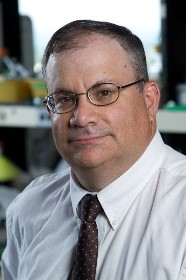 Dr. Hondal received a B.S. in chemistry from the University of Pittsburgh in 1991 and his Ph. D. in chemistry from The Ohio State University in 1997 where he trained in mechanistic enzymology with Dr. Ming-Daw Tsai. His post-doctoral training includes work with Dr. Raymond Burk at Vanderbilt University where he studied selenoprotein P, and work with Dr. Ronald Raines at the University of Wisconsin where he developed methods to make semisynthetic selenoproteins. He became an Assistant Professor of Biochemistry at the University of Vermont in 2002 (promoted to Associate Professor in 2008 with tenure) where he has studied the enzyme mechanism of thioredoxin reductase, developed new methods for the synthesis of selenocysteine-containing peptides, and has worked on the hypothesis that the use of selenium in proteins confers resistance to inactivation by oxidation.
Dr. Hondal received a B.S. in chemistry from the University of Pittsburgh in 1991 and his Ph. D. in chemistry from The Ohio State University in 1997 where he trained in mechanistic enzymology with Dr. Ming-Daw Tsai. His post-doctoral training includes work with Dr. Raymond Burk at Vanderbilt University where he studied selenoprotein P, and work with Dr. Ronald Raines at the University of Wisconsin where he developed methods to make semisynthetic selenoproteins. He became an Assistant Professor of Biochemistry at the University of Vermont in 2002 (promoted to Associate Professor in 2008 with tenure) where he has studied the enzyme mechanism of thioredoxin reductase, developed new methods for the synthesis of selenocysteine-containing peptides, and has worked on the hypothesis that the use of selenium in proteins confers resistance to inactivation by oxidation.
Kaixun Huang, Hubei Key Laboratory of Bioinorganic Chemistry & Medicines, China, Keynote Lecture
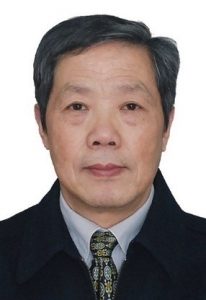 Dr. Kaixun Huang received a BS in chemistry from the Wuhan University and his MS in chemistry and PhD in Biology from Huazhong University of Science and Technology. He became a Professor of Biological Inorganic Chemistry in 1997 at the Hubei Key Laboratory of Bioinorganic Chemistry & Materia Medica, School of Chemistry and Chemical Engineering, Huazhong University of Science and Technology, China. He was the head of School of Chemistry and Chemical Engineering from 1997 to 2008. His research interest centres on selenium and selenoprotein biological actions in diabetes mellitus, vascular diseases and cataract via selenium deficiency or selnoprotein knockdown in mammalian cells and animal models. Additional interests are to develop the selenium-containing natural function food and the environmental bioinorganic chemistry.
Dr. Kaixun Huang received a BS in chemistry from the Wuhan University and his MS in chemistry and PhD in Biology from Huazhong University of Science and Technology. He became a Professor of Biological Inorganic Chemistry in 1997 at the Hubei Key Laboratory of Bioinorganic Chemistry & Materia Medica, School of Chemistry and Chemical Engineering, Huazhong University of Science and Technology, China. He was the head of School of Chemistry and Chemical Engineering from 1997 to 2008. His research interest centres on selenium and selenoprotein biological actions in diabetes mellitus, vascular diseases and cataract via selenium deficiency or selnoprotein knockdown in mammalian cells and animal models. Additional interests are to develop the selenium-containing natural function food and the environmental bioinorganic chemistry.
Dean Jones, Emory University, USA, Keynote lecture
Anna Kipp, German Institute of Human Nutrition, Keynote Lecture
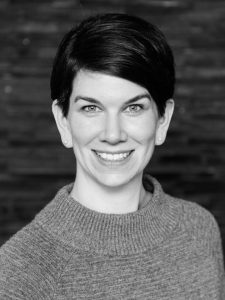 Dr. Anna Kipp is a Professor of Molecular Nutrition Physiology at the Friedrich Schiller University Jena. In 2009, she received her PhD in the field of nutritional biochemistry in the group of Regina Brigelius-Flohé. In 2012, she was granted with the International Schrauzer prize for selenium research. During her post doc, she spent several months at the University Medical Center Utrecht in the group of Onno Kranenburg and at the Karolinska Institute in Stockholm in the group of Elias Arnér. Her work is related to redox-regulation of signal transduction especially in cancer with the focus on intervention with micronutrients, especially selenium as integrated part of selenoproteins. Out of those, she is mainly interested in the role and function of glutathione peroxidase 2 in the healthy and diseased intestinal epithelium.
Dr. Anna Kipp is a Professor of Molecular Nutrition Physiology at the Friedrich Schiller University Jena. In 2009, she received her PhD in the field of nutritional biochemistry in the group of Regina Brigelius-Flohé. In 2012, she was granted with the International Schrauzer prize for selenium research. During her post doc, she spent several months at the University Medical Center Utrecht in the group of Onno Kranenburg and at the Karolinska Institute in Stockholm in the group of Elias Arnér. Her work is related to redox-regulation of signal transduction especially in cancer with the focus on intervention with micronutrients, especially selenium as integrated part of selenoproteins. Out of those, she is mainly interested in the role and function of glutathione peroxidase 2 in the healthy and diseased intestinal epithelium.
Josef Köhrle, Charité, Germany, Chair
Byeong Jae Lee, Seoul National University, South Korea, Keynote Lecture
Xingen Lei, Cornell University, USA, Keynote Lecture
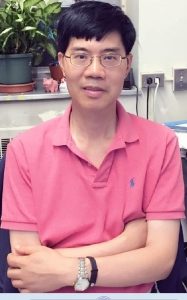 Xingen Lei is a Professor of Molecular Nutrition at Cornell University. He received his B.S. and M.S. in China, Ph.D. from Michigan State University, and a postdoctoral training at University Missouri. Lei pioneered the application of gene-knockout models to study nutritional genomics, and revealed dual roles of selenium and antioxidant enzymes in oxidative stress, insulin resistance, and diabetes. Lei developed a new generation of bacterial phytases that are used worldwide by the animal industry to preserve non-renewable inorganic phosphorus deposit and to prevent environmental pollution of phosphorus from animal excreta. He is exploring the nutritional, health, and environmental potential of defatted microalgae from the biofuel production as a new generation of food and feed protein. Lei is an international leader of the HarvestPlus program that uses new agricultural technologies in the global fight against micronutrient deficiencies in humans. He serves as an Associate Editor of Journal of Nutrition and Editorial Board Member of a number of journals.
Xingen Lei is a Professor of Molecular Nutrition at Cornell University. He received his B.S. and M.S. in China, Ph.D. from Michigan State University, and a postdoctoral training at University Missouri. Lei pioneered the application of gene-knockout models to study nutritional genomics, and revealed dual roles of selenium and antioxidant enzymes in oxidative stress, insulin resistance, and diabetes. Lei developed a new generation of bacterial phytases that are used worldwide by the animal industry to preserve non-renewable inorganic phosphorus deposit and to prevent environmental pollution of phosphorus from animal excreta. He is exploring the nutritional, health, and environmental potential of defatted microalgae from the biofuel production as a new generation of food and feed protein. Lei is an international leader of the HarvestPlus program that uses new agricultural technologies in the global fight against micronutrient deficiencies in humans. He serves as an Associate Editor of Journal of Nutrition and Editorial Board Member of a number of journals.
Dongli Liang, Northwest A&F; University, Keynote Lecture
Zhi-Qing Lin, Southern Illinois University Edwardsville, USA, Keynote Lecture, Chair
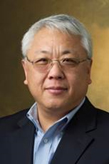 Dr. Zhi-Qing Lin is Professor and Chair of the Department of Environmental Sciences at Southern Illinois University – Edwardsville. Dr. Lin received his B.S. degree in Environmental Biology from Liaoning University in China, M.S. degree in Pollution Ecology from the Chinese Academy of Sciences, and Ph.D. degree in Renewable Resources from McGill University in Canada. He was a postgraduate researcher on Environmental Biogeochemistry at the University of California at Berkeley. His research is related to the biogeochemistry of environmentally important trace elements, with a special focus on biological accumulation, transformation, and volatilization processes in water-soil-plant systems. His research program has been financially supported by U.S. National Science Foundation, Department of Energy, Environmental Protection Agency, and National Institutes of Health. He is the author or coauthor of over 85 peer-reviewed articles published in scientific journals, proceedings, and monographs.
Dr. Zhi-Qing Lin is Professor and Chair of the Department of Environmental Sciences at Southern Illinois University – Edwardsville. Dr. Lin received his B.S. degree in Environmental Biology from Liaoning University in China, M.S. degree in Pollution Ecology from the Chinese Academy of Sciences, and Ph.D. degree in Renewable Resources from McGill University in Canada. He was a postgraduate researcher on Environmental Biogeochemistry at the University of California at Berkeley. His research is related to the biogeochemistry of environmentally important trace elements, with a special focus on biological accumulation, transformation, and volatilization processes in water-soil-plant systems. His research program has been financially supported by U.S. National Science Foundation, Department of Energy, Environmental Protection Agency, and National Institutes of Health. He is the author or coauthor of over 85 peer-reviewed articles published in scientific journals, proceedings, and monographs.
Graham Lyons, University of Adelaide, Australia, Keynote Lecture
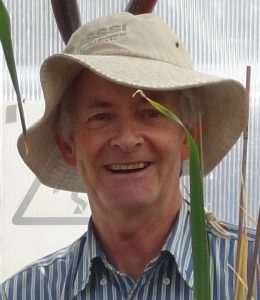 Graham’s interest in applied agricultural research that can improve human nutrition and health grew from 20 years’ working in the Pacific (cattle development) and managing a family agribusiness in South Australia. After studying epidemiology and micronutrients, especially selenium, in cereal crops, he established and managed the HarvestPlus food systems program 2005-2010, which included agronomic biofortification trials (with selenium, iodine and zinc) in China, Colombia and Australia, a mineral nutrient survey in East Africa and an orange sweet potato program in Solomon Islands and Papua New Guinea. Currently based at The University of Adelaide, researching and promoting nutritious leafy vegetables for Pacific atolls and screening cereal crops for salinity/sodicity tolerance.
Graham’s interest in applied agricultural research that can improve human nutrition and health grew from 20 years’ working in the Pacific (cattle development) and managing a family agribusiness in South Australia. After studying epidemiology and micronutrients, especially selenium, in cereal crops, he established and managed the HarvestPlus food systems program 2005-2010, which included agronomic biofortification trials (with selenium, iodine and zinc) in China, Colombia and Australia, a mineral nutrient survey in East Africa and an orange sweet potato program in Solomon Islands and Papua New Guinea. Currently based at The University of Adelaide, researching and promoting nutritious leafy vegetables for Pacific atolls and screening cereal crops for salinity/sodicity tolerance.
Matilde Maiorino, University of Padova, Italy, Keynote Lecture
Bernhard Michalke, Helmholtz Zentrum, Germany, Chair
Bernhard Michalke received his degree in Biological Sciences in 1985 and his Ph.D. in 1988 from the Technical University of Munich. Since 1996 he is lecturer at the “Institute of Analytical Chemistry and Food Chemistry”, Technical University Graz, where he received his habilitation and Professorship in Analytical Chemistry.
Bernhard Michalke is Deputy Director of the Research Unit Analytical BioGeoChemistry, leader of the research group “Elements and Element Speciation” and of an analytical core facility at the Helmholtz Center Munich –German Research Center for Environmental Health.
Bernhard authored more than 180 peer-reviewed papers, several book chapters and edited a book on speciation techniques in metallomics.
His research interests encompass speciation projects related to environmental health with a specific focus on element speciation combined with metabolomics related to neurodegenerative diseases.
From 2004 -2016 Bernhard has been president of the German Society on Minerals and Trace Elements (GMS) and is now head of the GMS advisory board. From 2007 – 2016 he has been president of the “Federation of European Societies on Trace Elements and Minerals” (FESTEM). Since 2012 Bernhard is also member of the Senate Commission of the Deutsche Forschungsgemeinschaft (DFG).
Anthony Newman, Elsevier, Netherlands, Keynote Lecture
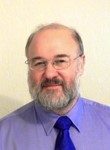 Anthony Newman is a Senior Publisher with Elsevier, and is based in Amsterdam. Currently responsible for fifteen laboratory medicine and biochemistry journals, he joined Elsevier 30 years ago and has been Publisher for the last 17 years. Before then he was the marketing communications manager for the biochemistry journals of Elsevier. By training he is a polymer chemist and was active in industry before leaving London and moving to Amsterdam in 1987 to join Elsevier.
Anthony Newman is a Senior Publisher with Elsevier, and is based in Amsterdam. Currently responsible for fifteen laboratory medicine and biochemistry journals, he joined Elsevier 30 years ago and has been Publisher for the last 17 years. Before then he was the marketing communications manager for the biochemistry journals of Elsevier. By training he is a polymer chemist and was active in industry before leaving London and moving to Amsterdam in 1987 to join Elsevier.
Ingrid Pickering, University of Saskatchewan, Chair
Elizabeth Pilon-Smits, Colorado State University, USA, Keynote Lecture
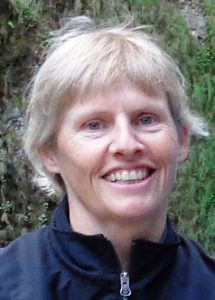 Dr. Elizabeth Pilon-Smits is Professor in the Biology Department at Colorado State University, Fort Collins, CO, USA. She obtained her Ph.D. in Biology at Utrecht University in the Netherlands in 1992, followed by a two-year postdoctoral research position at the same university. From 1994-1998 Dr. Pilon-Smits did postdoctoral work at UC Berkeley with Prof. Norman Terry in the Department of Plant and Microbial Biology, where she genetically engineered Indian mustard plants for enhanced selenium tolerance and accumulation. As of 1998 she is holds a faculty position at Colorado State University, where she teaches courses in Phytoremediation and in Plant Physiology and continues to study plant selenium physiology, molecular biology, ecology and evolution. Her research has been funded by the National Science Foundation, the United States Department of Agriculture and the Environmental Protection Agency. As of January 2017, Dr. Pilon-Smits has authored 136 publications, including 100 on the topic of selenium.
Dr. Elizabeth Pilon-Smits is Professor in the Biology Department at Colorado State University, Fort Collins, CO, USA. She obtained her Ph.D. in Biology at Utrecht University in the Netherlands in 1992, followed by a two-year postdoctoral research position at the same university. From 1994-1998 Dr. Pilon-Smits did postdoctoral work at UC Berkeley with Prof. Norman Terry in the Department of Plant and Microbial Biology, where she genetically engineered Indian mustard plants for enhanced selenium tolerance and accumulation. As of 1998 she is holds a faculty position at Colorado State University, where she teaches courses in Phytoremediation and in Plant Physiology and continues to study plant selenium physiology, molecular biology, ecology and evolution. Her research has been funded by the National Science Foundation, the United States Department of Agriculture and the Environmental Protection Agency. As of January 2017, Dr. Pilon-Smits has authored 136 publications, including 100 on the topic of selenium.
N. Tejo Prakash, Patiala, India, Keynote Lecture
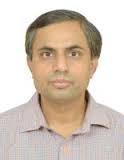 Dr. N.Tejo Prakash is a Professor at School of Energy and Environment, Thapar University, Patiala, India and is currently heading the School. He received his MS from SV University, India and his PhD from Pondicherry University, India. He worked as post-doctoral visitor at Blaustein Desert Research Institute, Israel and Defence Research and Development Organization, India before eventually joining as faculty at Thapar University as Assistant Professor in 2003. He was a visiting professor to University of Manchester, UK; Pennsylvania State University, USA; and Ritsumeikan University, Japan. He is presently working in the areas of Selenium biotransformations, bioaccessibility and bioactivity of environmental toxicants. He has published more than 50 articles in peer-reviewed journals.
Dr. N.Tejo Prakash is a Professor at School of Energy and Environment, Thapar University, Patiala, India and is currently heading the School. He received his MS from SV University, India and his PhD from Pondicherry University, India. He worked as post-doctoral visitor at Blaustein Desert Research Institute, Israel and Defence Research and Development Organization, India before eventually joining as faculty at Thapar University as Assistant Professor in 2003. He was a visiting professor to University of Manchester, UK; Pennsylvania State University, USA; and Ritsumeikan University, Japan. He is presently working in the areas of Selenium biotransformations, bioaccessibility and bioactivity of environmental toxicants. He has published more than 50 articles in peer-reviewed journals.
Nick Ralston, University of North Dakota, USA, Plenary Lecture: “Mercury’s Effects on Selenium Physiology: The Five “SOS” Mechanisms of Mercury Toxicity”
Margaret Rayman, University of Surrey, UK, Keynote Lecture
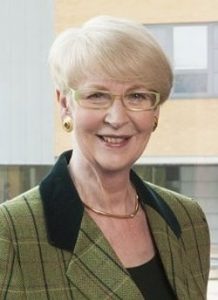 Margaret Rayman is Professor of Nutritional Medicine at the University of Surrey, UK, and Visiting Professor and Honorary Director of the Clinical Research Center at the First Affiliated Hospital, Xi’an Jiaotong University School of Medicine, Xi’an, China. Her research, which includes a number of randomised controlled trials, centres on the importance of trace elements to human health with particular emphasis on selenium and iodine in populations with marginal selenium or iodine status. A Thomson-Reuters Highly Cited Researcher, she has published widely on the effects of selenium on human health including a number of highly cited reviews in The Lancet. She has emphasised the inextricable U-shaped link between selenium status and health; while additional selenium intake may well benefit people with low selenium status, supplementation in those of adequate or high status may result in adverse consequences.
Margaret Rayman is Professor of Nutritional Medicine at the University of Surrey, UK, and Visiting Professor and Honorary Director of the Clinical Research Center at the First Affiliated Hospital, Xi’an Jiaotong University School of Medicine, Xi’an, China. Her research, which includes a number of randomised controlled trials, centres on the importance of trace elements to human health with particular emphasis on selenium and iodine in populations with marginal selenium or iodine status. A Thomson-Reuters Highly Cited Researcher, she has published widely on the effects of selenium on human health including a number of highly cited reviews in The Lancet. She has emphasised the inextricable U-shaped link between selenium status and health; while additional selenium intake may well benefit people with low selenium status, supplementation in those of adequate or high status may result in adverse consequences.
Andre Rodrigues dos Reis, Sao Paulo State University, Chair
Michael Rother, Dresden University of Technology, Germany, Keynote Lecture
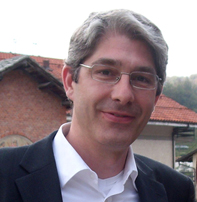 Michael Rother is a Professor for Microbial Diversity at the TU Dresden. He studied Biology at the LMU München, from where he also obtained his PhD in Microbiology in 2002. In his thesis work, under supervision of August Böck, he studied selenoprotein synthesis in Archaea. After two years of Postdoctoral work in the laboratory of William Metcalf at the University of Illinois, where he improved his skill for genetic manipulation of methanogenic archaea, he started his independent research program at the Goethe Universität in Frankfurt, where Volker Müller was his mentor. In 2011 Michael Rother was appointed in Dresden, where his research revolves around the energy metabolism of methanogens and how it can be genetically manipulated. In his selenium-related research he is working to elucidate the mechanism of selenium-dependent translational recoding and the path – from perception via transduction to effect on transcription and translation – of selenium-dependent gene regulation in Archaea.
Michael Rother is a Professor for Microbial Diversity at the TU Dresden. He studied Biology at the LMU München, from where he also obtained his PhD in Microbiology in 2002. In his thesis work, under supervision of August Böck, he studied selenoprotein synthesis in Archaea. After two years of Postdoctoral work in the laboratory of William Metcalf at the University of Illinois, where he improved his skill for genetic manipulation of methanogenic archaea, he started his independent research program at the Goethe Universität in Frankfurt, where Volker Müller was his mentor. In 2011 Michael Rother was appointed in Dresden, where his research revolves around the energy metabolism of methanogens and how it can be genetically manipulated. In his selenium-related research he is working to elucidate the mechanism of selenium-dependent translational recoding and the path – from perception via transduction to effect on transcription and translation – of selenium-dependent gene regulation in Archaea.
Carmen Sanmartín, Universidad de Navarra, Chair
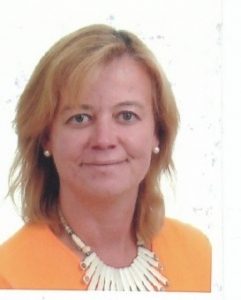 Dr. Sanmartin is an experienced bioorganic and medicinal chemist with expertise in the design, synthesis and biological evaluation of small molecules for multiple diseases such as hypertension, herpes and HIV. More recently, the broad focus of her research has been on development of novel molecules containing selenium as antitumoral and leishmanicidal agents so as the elucidation of their mechanism of action. Dr. Sanmartin is the Head of Department of Organic and Pharmaceutical Chemistry in the University of Navarra. Her expertise in medicinal chemistry and in cancer and leishmania biology placed her as a referent in the field of drug discovery. This has resulted in the development of some potent compounds so as in the participation in a lot of projects with different partners from Spain, Europe and USA. Dra. Sanmartin’s work has resulted in more than 100 publications including original research articles, reviews, book chapters and patents.
Dr. Sanmartin is an experienced bioorganic and medicinal chemist with expertise in the design, synthesis and biological evaluation of small molecules for multiple diseases such as hypertension, herpes and HIV. More recently, the broad focus of her research has been on development of novel molecules containing selenium as antitumoral and leishmanicidal agents so as the elucidation of their mechanism of action. Dr. Sanmartin is the Head of Department of Organic and Pharmaceutical Chemistry in the University of Navarra. Her expertise in medicinal chemistry and in cancer and leishmania biology placed her as a referent in the field of drug discovery. This has resulted in the development of some potent compounds so as in the participation in a lot of projects with different partners from Spain, Europe and USA. Dra. Sanmartin’s work has resulted in more than 100 publications including original research articles, reviews, book chapters and patents.
Ed Schmidt, Montana State University, USA, Chair
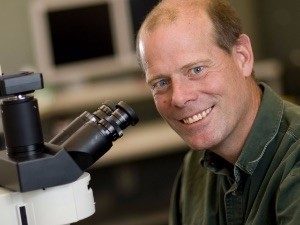 Ed Schmidt is a Professor at Montana State University. His research on redox biology focuses on the selenoprotein thioredoxin reductase-1 and includes both downstream and parallel pathways. His work uses mouse lines that his team engineers with specific mutations. His studies integrate genetics, biochemistry, molecular biology, and genomics. The biological processes he focuses on include liver physiology and regeneration, aging, oxidative stress, immune functions, and cancer.
Ed Schmidt is a Professor at Montana State University. His research on redox biology focuses on the selenoprotein thioredoxin reductase-1 and includes both downstream and parallel pathways. His work uses mouse lines that his team engineers with specific mutations. His studies integrate genetics, biochemistry, molecular biology, and genomics. The biological processes he focuses on include liver physiology and regeneration, aging, oxidative stress, immune functions, and cancer.
Lutz Schomburg, Charité, Germany, Chair
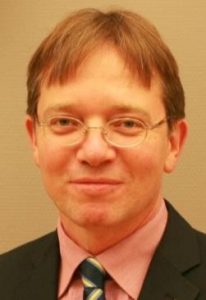 Lutz Schomburg works as an experimental endocrinologist in Berlin, Germany, and has a long-time interest in Selenium research. He is dedicated to translational science, i.e., trying to apply results from in vitro or model systems to human medicine. In this respect, his work focuses on the quantification of Se status by different biomarkers, the importance of regular Se intake for the prevention of diseases and for improving recovery in disease. Cancer, autoimmune thyroid and inflammatory diseases are at present the major areas of research in his lab.
Lutz Schomburg works as an experimental endocrinologist in Berlin, Germany, and has a long-time interest in Selenium research. He is dedicated to translational science, i.e., trying to apply results from in vitro or model systems to human medicine. In this respect, his work focuses on the quantification of Se status by different biomarkers, the importance of regular Se intake for the prevention of diseases and for improving recovery in disease. Cancer, autoimmune thyroid and inflammatory diseases are at present the major areas of research in his lab.
LS studied Biochemistry in Hannover, Germany, and completed his PhD thesis at the Max-Planck-Institute for Experimental Endocrinology. After post-doc positions in Hannover, Boston, USA, and Würzburg, Germany, he joined the Charité – Universitätsmedizin Berlin to serve as Professor for Experimental Endocrinology. He likes traveling, controversial discussions, constructive criticism and highly motivated and inspiring colleagues. Moreover, he enjoys very much serving as Vice President for the International Society for Selenium Research (ISSR), and the broad, multifaceted and enjoyable scientific meetings on behalf of our patroness, Selene.
Ulrich Schweizer, University of Bonn, Germany, Chair
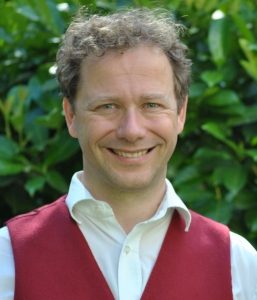 Ulrich Schweizer studied biochemistry at the University of Bayreuth, Germany, and received his Ph.D. in neurobiology from the University of Würzburg, Germany. He worked more than ten years in the Neuroscience Research Center and in the Institute for Experimental Endocrinology at Charité-Universitätsmedizin Berlin, and received the Schrauzer Prize for Selenium Research of the German Society for Minerals and Trace Elements. In 2013 he moved to Bonn as a professor for biochemistry. He is interested in the biochemistry and physiology of selenoproteins in brain and thyroid, and in mechanisms of selenoprotein biosynthesis in general. Research on iodothyronine deiodinases brought him to the study of structure and function, as well as physiology, of thyroid hormone transporters. Together with Josef Köhrle and Lutz Schomburg, he organized the 10th Symposium on Selenium in Biology and Medicine in Berlin in 2013. With Dolph L. Hatfield, Vadim N. Gladyshev and Petra “Peko” Tsuji, he edited the 4th edition of Selenium – Its Molecular Biology and Role in Human Health published in late 2016.
Ulrich Schweizer studied biochemistry at the University of Bayreuth, Germany, and received his Ph.D. in neurobiology from the University of Würzburg, Germany. He worked more than ten years in the Neuroscience Research Center and in the Institute for Experimental Endocrinology at Charité-Universitätsmedizin Berlin, and received the Schrauzer Prize for Selenium Research of the German Society for Minerals and Trace Elements. In 2013 he moved to Bonn as a professor for biochemistry. He is interested in the biochemistry and physiology of selenoproteins in brain and thyroid, and in mechanisms of selenoprotein biosynthesis in general. Research on iodothyronine deiodinases brought him to the study of structure and function, as well as physiology, of thyroid hormone transporters. Together with Josef Köhrle and Lutz Schomburg, he organized the 10th Symposium on Selenium in Biology and Medicine in Berlin in 2013. With Dolph L. Hatfield, Vadim N. Gladyshev and Petra “Peko” Tsuji, he edited the 4th edition of Selenium – Its Molecular Biology and Role in Human Health published in late 2016.
Helmut Sies, University of Düsseldorf, Germany, Chair
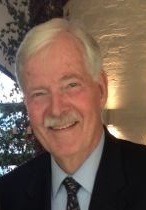 Helmut Sies, M.D., Ph.D. (hon), studied Medicine at the Universities of Tübingen, Paris and Munich. He was Full Professor and Chairman at the Institute of Biochemistry and Molecular Biology I at Heinrich-Heine-University Düsseldorf, Germany, where he is now a Research Professor. Member of the German National Academy of Sciences (Leopoldina). He was President of the Society for Free Radical Research International (SFRRI) and of the Oxygen Club of California (OCC).
Helmut Sies, M.D., Ph.D. (hon), studied Medicine at the Universities of Tübingen, Paris and Munich. He was Full Professor and Chairman at the Institute of Biochemistry and Molecular Biology I at Heinrich-Heine-University Düsseldorf, Germany, where he is now a Research Professor. Member of the German National Academy of Sciences (Leopoldina). He was President of the Society for Free Radical Research International (SFRRI) and of the Oxygen Club of California (OCC).
Research interests include: Oxidative Stress, Hydrogen Peroxide Metabolism, Glutathione, Ebselen, Selenoprotein P, Nutritional Biochemistry.
Julian Spallholz, Texas Tech University, USA, Keynote Lecture
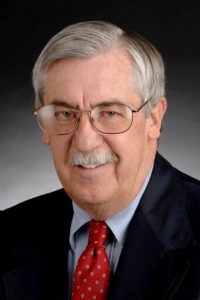 Professor Julian E. Spallholz has 50 years of varied nutrition, toxicological and drug research experience with the essential dietary nutrient selenium. Certain species of selenium compounds are catalytic and toxic in vitro to cells and in vivo to animals and humans. Understanding this redox toxicity of organic selenium compounds by the generation of superoxide from the oxidation of reduced thiols, Dr. Spallholz with students and colleagues has adapted this selenium toxicity through organic chemistry to attach redox selenides to small molecules, drugs, polypeptides, proteins and monoclonal antibodies. Catalytic selenium can even be attached covalently or hydrophobically to solid surfaces preventing biofilm formation. The long-term goal of this selenium research is to make clinical drugs with side effects less toxic or conversely, to turn non-toxic small molecules, peptides, proteins and mabs that target cancer, viruses and bacterial cells toxic. This is presently being done with small molecules and commercial monoclonal antibodies that are clinically used to treat breast and other cancers. Addition of redox selenium to targeting small molecules and monoclonal antibodies make cancer cells and cancer drug resistant cells more susceptible to treatment. The antibodies presently being studied with attached redox selenium are the commercial clinical monoclonal antibodies, Herceptin® and Avastin®. Julian has published with students and colleagues over 75 peer-reviewed manuscripts and is an inventor listed on ~20 US and foreign patents. His most cited Google Scholar manuscript is; Spallholz, J.E., (1994) On the Nature of Selenium Toxicity and Carcinostatic Activity. Free Radical Biology and Medicine, 17, 45-64. Dr. Spallholz was one of the Editors for the Proceedings of the 2nd and 3rd Selenium in Biology and Medicine Meetings held in Lubbock, TX and Beijing, China.
Professor Julian E. Spallholz has 50 years of varied nutrition, toxicological and drug research experience with the essential dietary nutrient selenium. Certain species of selenium compounds are catalytic and toxic in vitro to cells and in vivo to animals and humans. Understanding this redox toxicity of organic selenium compounds by the generation of superoxide from the oxidation of reduced thiols, Dr. Spallholz with students and colleagues has adapted this selenium toxicity through organic chemistry to attach redox selenides to small molecules, drugs, polypeptides, proteins and monoclonal antibodies. Catalytic selenium can even be attached covalently or hydrophobically to solid surfaces preventing biofilm formation. The long-term goal of this selenium research is to make clinical drugs with side effects less toxic or conversely, to turn non-toxic small molecules, peptides, proteins and mabs that target cancer, viruses and bacterial cells toxic. This is presently being done with small molecules and commercial monoclonal antibodies that are clinically used to treat breast and other cancers. Addition of redox selenium to targeting small molecules and monoclonal antibodies make cancer cells and cancer drug resistant cells more susceptible to treatment. The antibodies presently being studied with attached redox selenium are the commercial clinical monoclonal antibodies, Herceptin® and Avastin®. Julian has published with students and colleagues over 75 peer-reviewed manuscripts and is an inventor listed on ~20 US and foreign patents. His most cited Google Scholar manuscript is; Spallholz, J.E., (1994) On the Nature of Selenium Toxicity and Carcinostatic Activity. Free Radical Biology and Medicine, 17, 45-64. Dr. Spallholz was one of the Editors for the Proceedings of the 2nd and 3rd Selenium in Biology and Medicine Meetings held in Lubbock, TX and Beijing, China.
Roger Sunde, University of Wisconsin, Chair
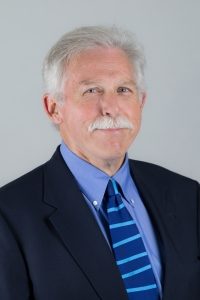 Dr. Roger A. Sunde is Professor of Nutritional Sciences at the University of Wisconsin, and has been conducting research on Selenium since 1971. He earned his Ph.D. from the University of Wisconsin (Biochemistry) in 1980, and has had positions at the Rowett Research Institute (Scotland, 1981-83), the University of Arizona (1983-89), and the University of Missouri (1990-04). He was organizer and chair of the 2006 8th International Symposium on Selenium in Biology and Medicine. Dr. Sunde’s research is focused on molecular Se nutrition, including Se deficiency as a model for nutrient regulation of gene expression, the molecular mechanism of Se regulation, biochemical functions of Se, and use of mRNA transcripts as molecular biomarkers for assessment of Se requirements, deficiency and toxicity, using rats, mice, turkeys, chickens, C. elegans, and humans as models.
Dr. Roger A. Sunde is Professor of Nutritional Sciences at the University of Wisconsin, and has been conducting research on Selenium since 1971. He earned his Ph.D. from the University of Wisconsin (Biochemistry) in 1980, and has had positions at the Rowett Research Institute (Scotland, 1981-83), the University of Arizona (1983-89), and the University of Missouri (1990-04). He was organizer and chair of the 2006 8th International Symposium on Selenium in Biology and Medicine. Dr. Sunde’s research is focused on molecular Se nutrition, including Se deficiency as a model for nutrient regulation of gene expression, the molecular mechanism of Se regulation, biochemical functions of Se, and use of mRNA transcripts as molecular biomarkers for assessment of Se requirements, deficiency and toxicity, using rats, mice, turkeys, chickens, C. elegans, and humans as models.
Joanna Szpunar, CNRS, France, Keynote Lecture
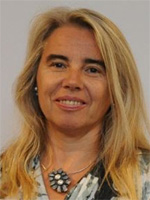 Joanna Szpunar graduated from the Warsaw University of Tec hnology in
Joanna Szpunar graduated from the Warsaw University of Tec hnology in
1986 and obtained her Ph.D (1992) and D.Sc. (habilitation) (2000) from at the University of Warsaw. Since 1997 she works at the National Research Council of France (CNRS). In 2007 she obtained the title of professor of chemistry (Poland). Her research interests concern bioinorganic speciation analysis and hyphenated techniques for metallomics.
Joanna Szpunar is the Fellow of the Royal Society of Chemistry and the recipient of the 2017 European Plasma Award for contributions in the field of metallomics and bio-organic speciation, and her support of the plasma spectrochemistry and inorganic mass spectrometry community.
Dieter Söll, Yale University, USA, Keynote Lecture
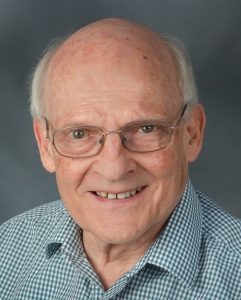 Dieter Söll (b. 1935 ) is Sterling Professor of Molecular Biophysics and Biochemistry at Yale University. He received his early education in Germany (Tübingen, Berlin) and England (Durham University) before earning his PhD in Chemistry at the Technische Hochschule, Stuttgart, Germany. After postdoctoral training with H.G. Khorana at the University of Wisconsin he joined (in 1967) the faculty of Yale University.
Dieter Söll (b. 1935 ) is Sterling Professor of Molecular Biophysics and Biochemistry at Yale University. He received his early education in Germany (Tübingen, Berlin) and England (Durham University) before earning his PhD in Chemistry at the Technische Hochschule, Stuttgart, Germany. After postdoctoral training with H.G. Khorana at the University of Wisconsin he joined (in 1967) the faculty of Yale University.
A contributor to over 600 scientific papers, Söll‘s research interests have varied widely from genetics, molecular biology, genomics, and evolution of protein biosynthesis to gravity perception in plants. The recurring theme of his research is the understanding of the role of transfer RNA and aminoacyl‐tRNA synthetases in interpreting the genetic code. Currently he is working on expanding the genetic code in the realm of synthetic biology.
He is a member of the US National Academy of Sciences, an Associate Member of the European Molecular Biology Organization (EMBO), a corresponding member of the Croatian Academy of Sciences and Arts, a fellow of the American Academy of Microbiology, and a fellow of the American Association for the Advancement of Science.
Jan Trofast, Sweden, Plenary Lecture: “Berzelius and his discovery of Selenium”
Jan Trofast, b. 1946, Ph.D. in organic chemistry 1978, ass. director in medicinal chemistry 1979 (Draco), later scientific (patent) adviser (AstraZeneca), inventor of Symbicort. Author of more than 15 books in history of chemistry, particularly about Jacob Berzelius and his contemporaries. Consultancy in patents, innovation and culture since 2011.
Fulvio Ursini, University of Padova, Italy, Keynote Lecture
Philip White, The James Hutton Institute, UK, Plenary Lecture: “Selenium metabolism in plants”
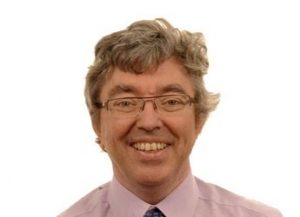 Professor White has published over 300 scientific articles and is designated a “Highly Cited Researcher in Plant and Animal Science” by Thomson Reuters. He is a member of the International Council on Plant Nutrition, a Full Professor in Biology at King Saud University, and an Honorary Professor at the University of Nottingham. He currently leads a personal research group at The James Hutton Institute, Scotland, engaged on projects related to plant mineral nutrition: optimising fertiliser applications, biofortifying crops with mineral elements essential for human nutrition, and preventing toxic elements from entering the food chain.
Professor White has published over 300 scientific articles and is designated a “Highly Cited Researcher in Plant and Animal Science” by Thomson Reuters. He is a member of the International Council on Plant Nutrition, a Full Professor in Biology at King Saud University, and an Honorary Professor at the University of Nottingham. He currently leads a personal research group at The James Hutton Institute, Scotland, engaged on projects related to plant mineral nutrition: optimising fertiliser applications, biofortifying crops with mineral elements essential for human nutrition, and preventing toxic elements from entering the food chain.
Lenny Winkel, Eawag, Switzerland, Plenary Lecture: “The global cycle of selenium”, Chair
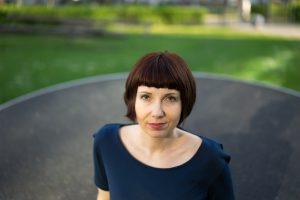 Prof. Dr. Lenny H.E. Winkel is currently Assistant Professor at ETH Zurich (Swiss Federal Institute of Technology in Zurich) and group leader at Eawag (Swiss Federal Institute of Aquatic Science and Technology) in Duebendorf, Switzerland. She did her undergraduate studies in Geology at Utrecht University (the Netherlands) and obtained her Ph.D. in Geochemistry in 2006 at ETH Zurich, followed by postdoctoral research positions at Eawag and University of Grenoble, (France), University of Aberdeen (UK) and the Technical University of Crete (Greece) in the frame of an EU funded Marie Curie project. Her postdoctoral research focused on broad-scale predictions of arsenic in groundwaters and pathways of different selenium species in the natural environment. In 2011 she was awarded a Swiss National Science Foundation (SNSF) Professorship for her project on the global biogeochemical cycle of selenium. Her current research is focused on trace elements with important health impacts, and more specifically on the biogeochemical cycling of these elements from the molecular to the global scale. Furthermore, her research focuses on predicting effects of climate and environmental changes on the cycling and environmental distributions of these trace elements. Her research has been published in top-ranked disciplinary scientific journals (e.g., Environmental Science and Technology and Nature Geoscience) and interdisciplinary journals (e.g., Nature Communications and PNAS).
Prof. Dr. Lenny H.E. Winkel is currently Assistant Professor at ETH Zurich (Swiss Federal Institute of Technology in Zurich) and group leader at Eawag (Swiss Federal Institute of Aquatic Science and Technology) in Duebendorf, Switzerland. She did her undergraduate studies in Geology at Utrecht University (the Netherlands) and obtained her Ph.D. in Geochemistry in 2006 at ETH Zurich, followed by postdoctoral research positions at Eawag and University of Grenoble, (France), University of Aberdeen (UK) and the Technical University of Crete (Greece) in the frame of an EU funded Marie Curie project. Her postdoctoral research focused on broad-scale predictions of arsenic in groundwaters and pathways of different selenium species in the natural environment. In 2011 she was awarded a Swiss National Science Foundation (SNSF) Professorship for her project on the global biogeochemical cycle of selenium. Her current research is focused on trace elements with important health impacts, and more specifically on the biogeochemical cycling of these elements from the molecular to the global scale. Furthermore, her research focuses on predicting effects of climate and environmental changes on the cycling and environmental distributions of these trace elements. Her research has been published in top-ranked disciplinary scientific journals (e.g., Environmental Science and Technology and Nature Geoscience) and interdisciplinary journals (e.g., Nature Communications and PNAS).
Masayuki Yamamoto, Tohoku University Graduate School of Medicine, Keynote Lecture
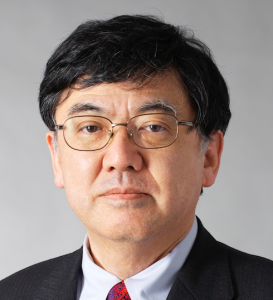 Masayuki Yamamoto was graduated from Tohoku University School of Medicine in 1979 and from Tohoku University Graduate School of Medicine in 1983. He obtained Doctor of Medical Sciences (PhD) in 1983 for his study on the metabolic regulation of heme biosynthesis. In 1983-1986, Yamamoto was a postdoctoral fellow at Northwestern University with Professor Doug Engel. During this period, he cloned erythroid-type 5-aminllevulinate synthase (ALAS2) cDNA, and conclusively proved the presence of erythroid isozymes in heme biosynthetic enzymes.
Masayuki Yamamoto was graduated from Tohoku University School of Medicine in 1979 and from Tohoku University Graduate School of Medicine in 1983. He obtained Doctor of Medical Sciences (PhD) in 1983 for his study on the metabolic regulation of heme biosynthesis. In 1983-1986, Yamamoto was a postdoctoral fellow at Northwestern University with Professor Doug Engel. During this period, he cloned erythroid-type 5-aminllevulinate synthase (ALAS2) cDNA, and conclusively proved the presence of erythroid isozymes in heme biosynthetic enzymes.
In 1989, Yamamoto revisited the Engel laboratory and in collaboration identified the GATA family of transcription factors, which are now widely studied and one of the prototype transcription factor families regulating lineage commitment and cell differentiation. In 1991, Yamamoto returned to Japan and starts analyses on the regulation of Gata1 and Gata2 genes during hematopoiesis. He clarified unique structure of the genes, and identified hematopoietic enhancer of Gata1 and Gata2 genes, leukemia due to Gata1 knockdown, and developed the notion GATA1-related leukemia. He received the Inoue Science Prize (1996) for his contribution to the study of hematopoietic transcription factors.
In 1995, Yamamoto became a Professor at University of Tsukuba and started a series of analyses on CNC and Maf family of transcription factors. He identified the KEAP1-NRF2 system regulating the cellular response against electrophilic and oxidative stresses. Since then, he has been addressing many questions related to this important regulatory pathway. A series of his papers on this topic awarded Thomson Scientific Research Front Award 2004, Tsukuba Prize (2007), Nissan Science Award (2008), Leading Edge in Basic Science Award from the Society of Toxicology (2011), Toray Science and Technology Prize (2011), Uehara Prize (2012), Medal with Purple Ribbon (The Emperor of Japan; 2012), Takamine-memorial Daiichi Sankyo Prize (2013) and the Japan Academy Prize (2014).
Xuebin Yin, USTC, China, Co-organizer & Keynote Lecturer
Björn Åkesson, Lund University, Sweden, Chair
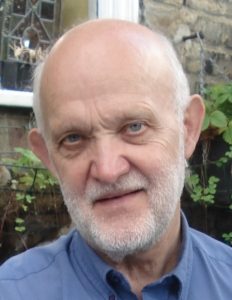 Björn Åkesson, professor, Biomedical Nutrition, Pure and Applied Biochemistry, Lund University, Lund, Sweden.
Björn Åkesson, professor, Biomedical Nutrition, Pure and Applied Biochemistry, Lund University, Lund, Sweden.
Björn Åkesson became MD in 1979 (Lund University) and spent a year as Visiting Associate Professor at the Department of Medicine, Vanderbilt University, Nashville in 1990. His research on selenium has focussed on the selenoproteins in human blood plasma and on the forms of selenium in human foods. Eight PhD theses in the selenium field have been completed (by TS SriKumar, W Huang, M Persson Moschos, H Lindmark Månsson, J Chen, C Daun, T Hoac and K Bruzelius). Several topics on selenium have also be addressed in the two EU Networks of Excellence NuGO (The European Nutrigenomics Organisation) and ECNIS (Environmental cancer risk, nutrition and individual susceptibility), in the EU project “Speciation and bioavailability of selenium from processed and tailormade fishery products” and in the Danish-Swedish Foodantiox project (The role of selenium for food quality and consumer health) supported by Öforsk (The Committee for Research and Development of the Öresund region). Recently his group became partner in the Nordic Centre of Excellence in Food, Nutrition and Health: SYSDIET (Systems biology in controlled dietary interventions and cohort studies).
